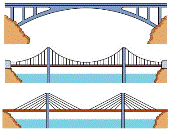Civil and Environmental Engineering
Document Type
Article
Date of this Version
11-20-2023
Citation
J. Chem. Inf. Model. 2023, 63, 7299−7319. https://doi.org/10.1021/acs.jcim.3c01303
Abstract
Per and polyfluoroalkyl substances (PFAS) present a unique challenge to remediation techniques because their strong carbon−fluorine bonds make them difficult to degrade. This review explores the use of in silico enzymatic design as a potential PFAS degradation technique. The scope of the enzymes included is based on currently known PFAS degradation techniques, including chemical redox systems that have been studied for perfluorooctanesulfonic acid (PFOS) and perfluorooctanoic acid (PFOA) defluorination, such as those that incorporate hydrated electrons, sulfate, peroxide, and metal catalysts. Bioremediation techniques are also discussed, namely the laccase and horseradish peroxidase systems. The redox potential of known reactants and enzymatic radicals/metal-complexes are then considered and compared to potential enzymes for degrading PFAS. The molecular structure and reaction cycle of prospective enzymes are explored. Current knowledge and techniques of enzyme design, particularly radical-generating enzymes, and application are also discussed. Finally, potential routes for bioengineering enzymes to enable or enhance PFAS remediation are considered as well as the future outlook for computational exploration of enzymatic in situ bioremediation routes for these highly persistent and globally distributed contaminants.



Comments
Used by permission.